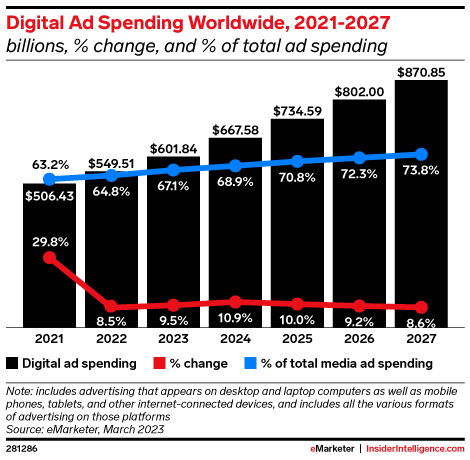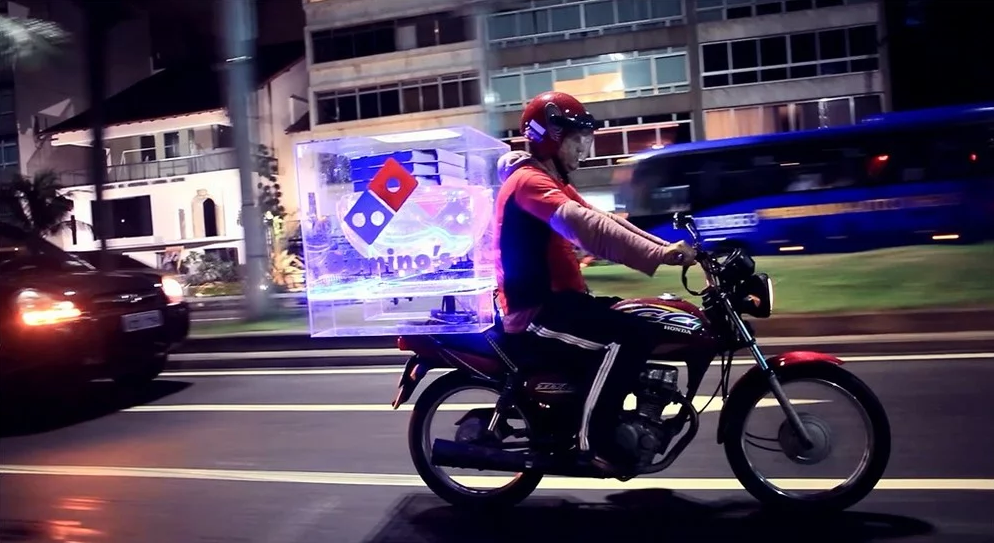Ever since Jimmy and I launched the Hospitality Headline, I've come to a realization – I've neglected to touch upon marketing in the Business section of our newsletter. Quite an oversight, I must admit. Considering my role as a marketing professional and my collaboration with Julie Zucker, Partner and Chief Marketing Officer at Branded... I'd say we know a thing or two about the business of marketing. From growing a podcast to 15k streams per episode, amassing a newsletter with 20,000 dedicated subscribers in a matter of months, orchestrating triumphant events at tradeshows, to launching an online marketplace. No this is not a self-promotion to partner on our podcast or our newsletter, I'm simply saying I've witnessed the profound effect of marketing as we've grown to 46 investments, created a partnership program and have two new funds on the horizon. While I'll save the exciting news about our funds for another time, I will say our firm has exemplified the extraordinary growth potential catalyzed by strategic marketing initiatives.
Evolving Landscape: Marketing's Crucial Connection with Revenue Generation
In an era marked by groundbreaking transformations, marketing has seamlessly intertwined itself with sales teams, evolving into a key player in revenue generation across various industries.
I recently read an article about the history of Andreessen Horowitz, a venture capital firm with $35 billion AUM. Their approach to marketing, as opposed to the traditionally reserved nature of their peers, was a game-changer so naturally I had to share it with the Headliners.
As stated in the article, "To get their foot in the door as a new investment firm, they decided to take the opposite approach as the close-lipped firms surrounding them. Andreessen Horowitz leaned heavily into marketing. The founders threw lavish events filled with celebrities and media. They gave an endless string of interviews with mainstream and tech journals, talking up their firm and the companies they invested in and talking down their competition."
Now I'm not telling you to break the bank and throw expensive events at the Ritz Carlton (IYKYK), however, this is a prime example of the power of marketing and how it goes a lot further than mom and dad putting you up on the fridge because you made it into the paper. Not to take away from an A+ hanging on the fridge but we're in the big leagues here.
Navigating the Digital Marketing Landscape
With traditional advertising receding in prominence, digital avenues are taking center stage. Projections indicate that global digital ad spending is poised to exceed $600 billion this very year. Food and beverage companies in particular spend around $14 billion per year on advertising just in the US!

For example, in 2021, Nestle, an esteemed global food brand, allocated approximately $2.45 billion for advertising expenditure in the United States alone. Similarly, in 2022, PepsiCo directed around $2 billion towards advertising in the United States, achieving peak advertising spending during that period. A recent report indicates that Restaurant Brands International witnessed a surge in sales, partially attributed to a $10 million advertising investment for Burger King in the U.S. during the quarter.
In the QSR space Domino's spent more on advertising in the US in 2021 than any other recognized restaurant chain with 510 million in ad expenditure. They have seen a return of about $35 for every dollar spent on advertising over the last five years. In 2022, 3G Capital, Domino's, Roark Capital, Yum! Brands and Wendy's contributed the bulk of the ad dollars. Combined they spent over $2.5b or 76% of the category's investment.

Unveiling the Restaurant Marketing Budget
Now let's be real here not every restaurant is able to shell out like the big brands, depending on your revenue you can easily determine how much you should be spending. The average restaurant marketing budget is between 3-6% of a restaurant's total revenue. However, some restaurants may spend up to 10% of their sales on marketing. Intriguingly, startups often earmark a higher percentage—up to 30%—of their revenue for marketing efforts. To offer a comprehensive perspective, let's explore how a restaurant marketing budget might be strategically distributed:
- 15% for print or radio ads
- 10% for social media marketing (e.g., Facebook ads)
- 5% for PR and brand awareness campaigns
- 5% for direct mail or email marketing
- 3% for events or sponsorships
- 2% for loyalty programs or customer rewards
Embracing the 70/20/10 Model
An invaluable strategy in budget allocation is the 70/20/10 model. This approach encourages businesses to allocate 70% of their budget to proven marketing techniques, 20% to tactics that have shown potential in past experiments, and 10% to innovative methods being tried for the first time. By embracing this model, businesses can strike a balance between capitalizing on established successes and exploring innovative avenues.
The interplay between marketing and business growth is an intricate dance, where strategic planning and thoughtful execution pave the way for remarkable success stories. As we reflect on our own journey and the industry giants who have harnessed the power of marketing, it becomes evident that this symbiotic relationship is a driving force behind sustained growth in today's ever-evolving business landscape.
To learn more marketing tactics check out this article written by Rev Ciancio on the 5 Tactics Guaranteed to Increase Revenue with Email!


